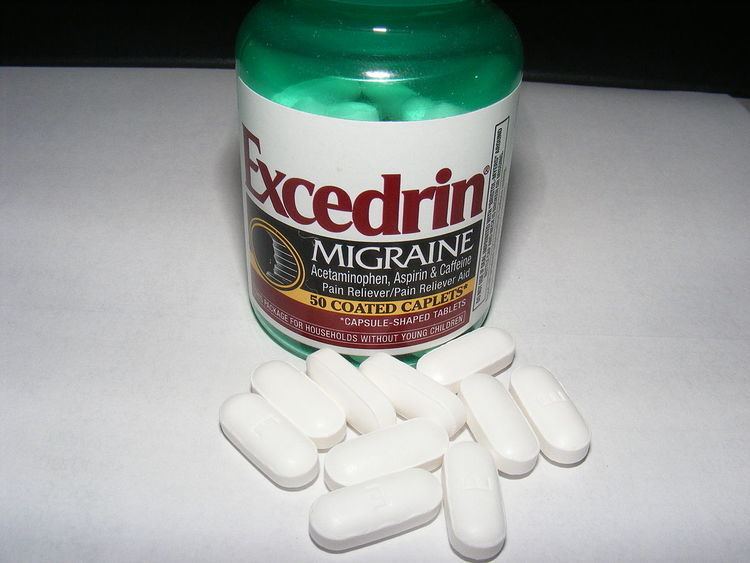 | ||
Excedrin is an over-the-counter headache pain reliever, typically in the form of tablets or caplets. It contains paracetamol (acetaminophen), aspirin, and caffeine. Until late 2005 it was manufactured by Bristol-Myers Squibb, but in July 2005 it was purchased by Novartis, along with other products from BMS's over-the-counter business. As of March 2015, GSK holds majority ownership of Excedrin through a joint venture transaction with Novartis.
Contents
Excedrin was one of the top ten selling over-the-counter medicine brands in the United States. There are other brands on the market that contain the same combination of drugs, such as the Roter APC tablets available in Europe.
The brand became known for advertisements in which Excedrin cured especially unpleasant and excruciating headaches (which were termed in the advertisements as "Excedrin headaches," later called "Excedrin tension headaches").
In 2007, the brand branched out into marketing for other types of pains with the introduction of Excedrin Back & Body, which removed the caffeine from the normal mixture.
Versions
Over the years, different types of the drug were introduced:
Ownership
In 2005, Bristol-Myers Squibb announced the sale of its North American consumer medicine business (including Excedrin, Comtrex and Keri brands) to Novartis for $660 million, in order to focus on drugs for the ten most profitable disease areas. As of March 2015, GlaxoSmithKline holds majority ownership through a joint venture transaction with Novartis.
2012 Recall
On January 9, 2012, Novartis announced that it was voluntarily recalling all lots of select bottle packaging configurations of Excedrin products with expiration dates of December 20, 2014, or earlier as a precautionary measure because the products may contain stray tablets, capsules, or caplets from other Novartis products, or contain broken or chipped tablets. The recall was conducted with the knowledge of the U.S. Food and Drug Administration. Wholesalers and retailers were instructed to stop distribution and return the affected product. Consumers in possession of recalled Excedrin were instructed to stop using the product and contact Novartis. Novartis has stated that Excedrin will be shipping to stores on October 15 and customers will start seeing it by the first of November.
